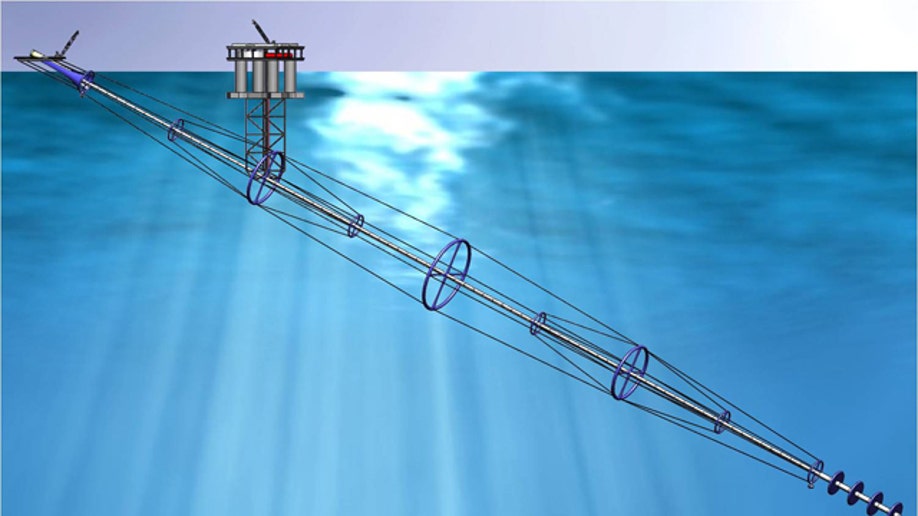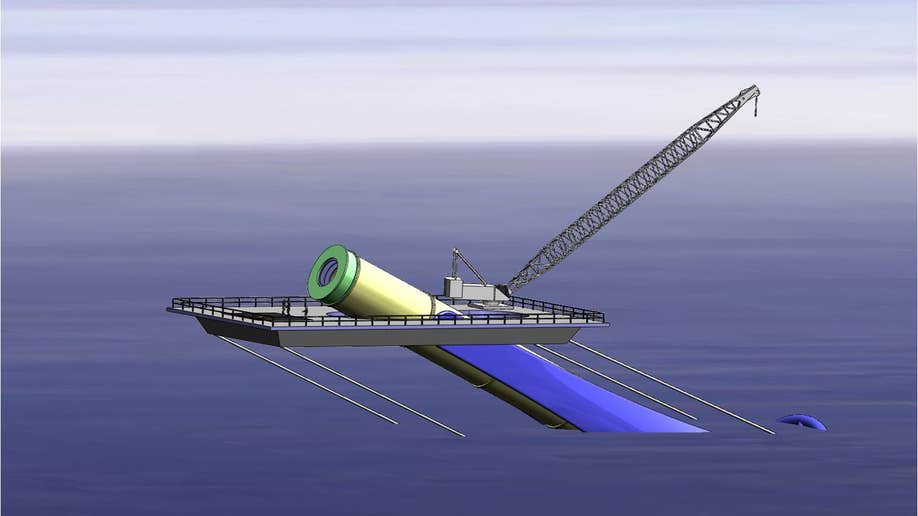How a Space Cannon Would Work
{{#rendered}} {{/rendered}}
The basic elements of the cannon are shown here: a launch tube connected to a sound-muffling platform on the surface of the water. There's also a maintenance platform rising to the right. Circular cable supports add buoyancy the tube and keep it posistioned, while tensioning cables keep the cannon secure. At its base, a pump tube with recoil fins anchors it. (John Hopkins/Quicklaunch)

The muffler platform damps sound and allows for maintenance. The end of the tube is fitted with a muffler and a hydrogen capture valve to prevent the escape of the gas. A helipad sits just beneath the end of the tube. (Quicklaunch Inc.)
at left, the exposed muzzle of the space cannon shows shocks designed to absorb recoil. At right, the mobile maintenance platform has gray liquid nitrogen gas tanks and red hydrogen tanks. Tubes descend from the platform to feed gas into the cannon. (Quicklaunch Inc.)
Several key elements reside at the base of the space cannon. Red, purple, gray and black tubes are shown carrying hydrogen, natural gas, air and exhaust lines (vacuum, diagnostics, and control lines aren't shown here). A steering-wheel shaped aft thruster keeps the canon correctly positioned, while purple discs act as recoil fins and buoyancy compensators. (Quicklaunch Inc.)
When the buoyancy compensators are empty, the canon floats to the surface on a central pivot for maintenance or transport. (Quicklaunch Inc.)
In the 90s, John Hopkins built SHARP, itself a massive gas gun. Short for Super High Altitude Research Project, he constructed it while working at <a target="_blank" href="https://www.llnl.gov/"><b>Lawrence Livermore National Lab</b></a>. The new cannon, he says, will kick-start the comatose space program, which he says has faltered since the last manned mission to the moon. (Quicklaunch Inc. )
Construction work on the SHARP gun in May of 1992. (Quicklaunch Inc.)
Short for Super High Altitude Research Project, Hopkins constructed the earlier SHARP gas gun while working at Lawrence Livermore. Here, workers shrink-fit a high-pressure section of the gun. (Quicklaunch Inc.)
The 10-pound "scramjet" payload that SHARP was able to shoot at Mach 9. (Quicklaunch Inc.)
During a test fire of the SHARP gas gun, a payload is accelerated to Mach 9. (quicklaunch Inc.)
